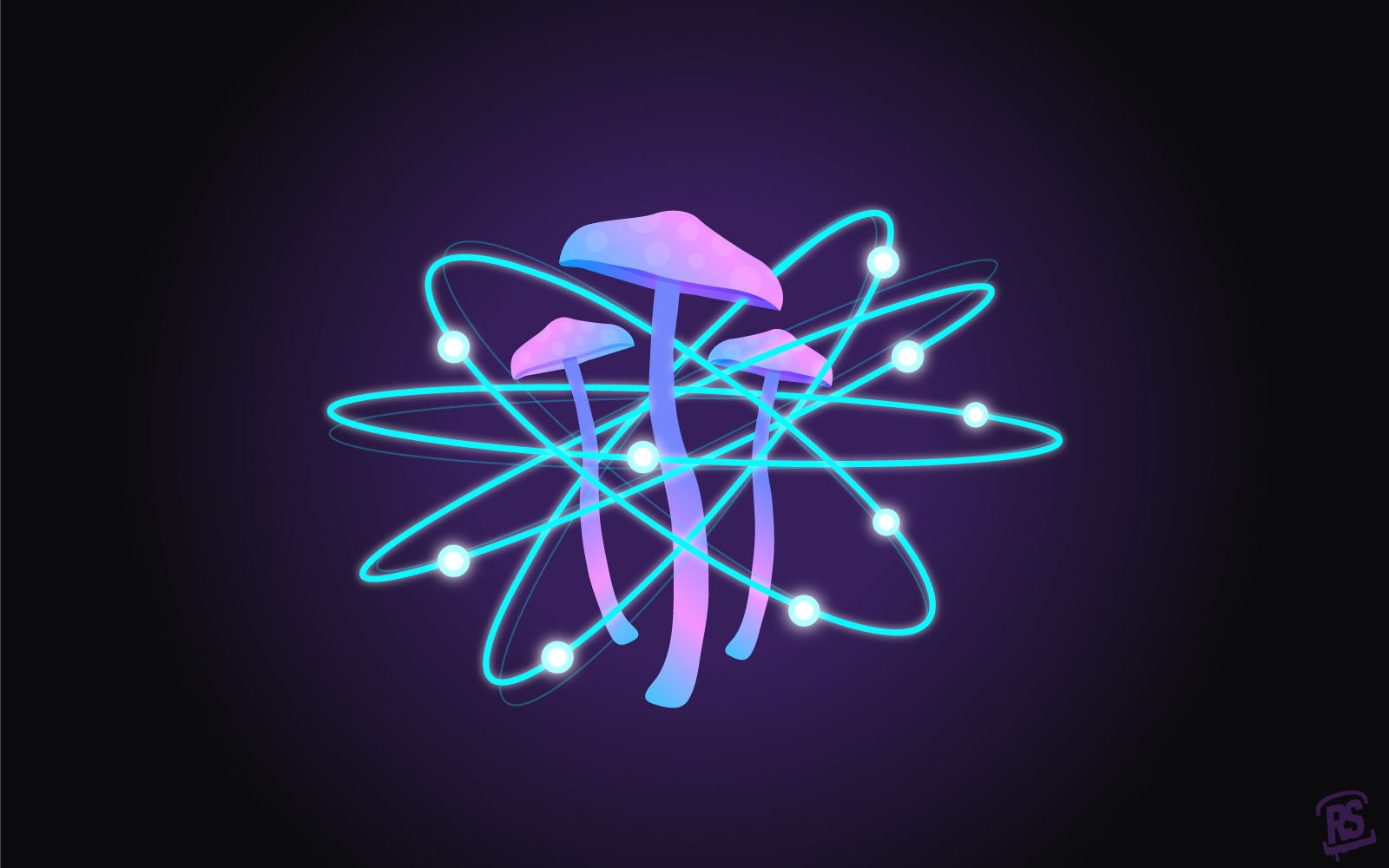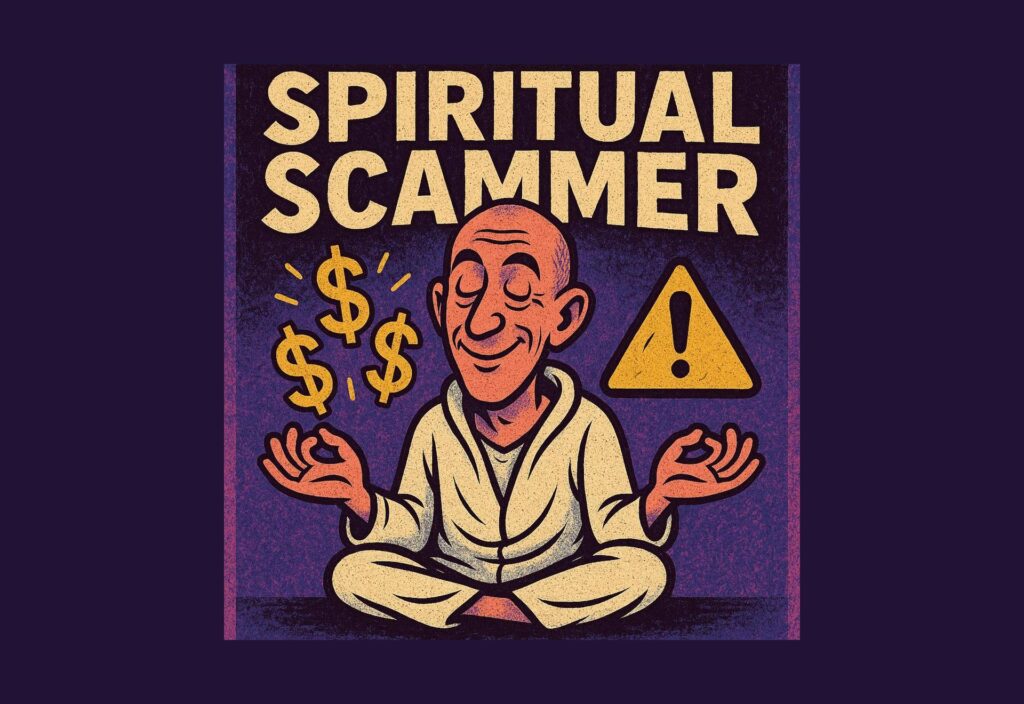Does knowing quantum mechanics help you understand reality as much as magic mushrooms do? This is a fun question. But it has a serious side, a side that can be summarized by the word “understand.” What do you understand? What do we understand? What is our knowledge? Our wisdom? And conversely, what is lacking in our understanding?
Magic in the Quantum
Quantum mechanics (QM) and psilocybin mushrooms (PM) are both challenging. Not many people would dare say, “I totally understand quantum mechanics!” or “Psilocybin mushroom journeys are a piece of cake!”
About quantum mechanics, I remember watching a YouTube video of Richard Feynman, a Nobel laureate in physics, who said of a quantum phenomenon, “But what does it mean?”
I’m sure many of us have said something similar during or after a magic mushroom trip—unless we were too dumbstruck.
Nevertheless, I will venture to articulate some lessons we can glean from both QM and PM. And just for fun, at the end of the essay, we can each vote on which one teaches us more.
Understanding the Difference in Experience
A starting point is to acknowledge that understanding quantum mechanics requires us to operate in ordinary consciousness. QM is our current understanding of how the physical universe works. Nature doesn’t need the theory of quantum mechanics. It does much more than we can ever comprehend in just a teaspoon of dirt.
In contrast, partaking in psilocybin mushrooms is an exercise in non-ordinary consciousness. However, after a PM journey, we return to ordinary consciousness and retain some fraction of what we learned. What fraction? Well, that can vary a lot, depending on the particular journey and person, so we won’t specify a particular number here.
The ground rules, then, for comparing and understanding QM and PM require us to be in ordinary consciousness. Otherwise we’re comparing apples and oranges.
While I have substantial experience with both, I don’t claim to be a leading expert in either QM or PM. I have a Ph.D. in chemical physics, and I have published original research applying QM to solve a variety of problems. I also am experienced with PM, and I have practiced meditation for many years, which has enhanced some of my abilities to appreciate the PM experience.
There are various schools of thought regarding the interpretation of quantum mechanics. It’s a huge subject with lots of points of view, and oodles of intriguing YouTube videos. I’ll provide a few salient observations here.

Exploring Quantum Mechanics
Whether or not we’ve studied physics, we’ve all been immersed in classical mechanics (CM) concepts. They’re ingrained in how we think about the world. This is because CM works well for most of our ordinary questions, like how airplanes fly and bowling balls fall. But there are plenty of examples we are all familiar with that actually require QM for an explanation. For example, if you sprinkle some table salt (which is mostly sodium chloride) into a campfire or the gas flame of a stovetop, you see a brief, bright, yellow flame. Why is it yellow and not orange or green? Speaking of color, why is a ruby red and the sky blue?
Although these are great QM examples, they don’t really teach us much about reality other than showing that CM can’t explain everything. The color of a flame doesn’t touch our lives the way questions like “Who am I?” or “What am I?” do.
I’ll give examples that I hope get closer to that target.
Providing Evidence
One simple fact is that ordinary matter—like our bodies, or the chair we’re sitting on, or this earth—is made up of mostly empty space: 99.9999999% nothing there, in fact. It’s a little hard on my eyes to count that many nines. In loose QM language, there are electrons whizzing around a nucleus; and the electron “clouds” or “orbits” around each nucleus like to get close, but not too close, to the neighboring electron clouds (chemistry!). And electrons and nuclei are super tiny compared to the space they occupy. So we’re really mostly…nothing at all! Something to keep in mind.
Indistinguishable Particles
Two more quantum properties are especially intriguing and have absolutely no classical analog. They are “indistinguishable particles” and “entangled particles.”
An example of indistinguishable particles is two oxygen atoms, one charged (an ion) and the other neutral. They approach each other from specific directions and when they get close to each other (collide, and subsequently recoil), an electron can jump from one to the other (or many times back and forth), in what is called symmetric charge exchange. But because you are observing two particles that are identical, you can’t tell whether the resulting neutral oxygen atom started as neutral or charged, or approached from one direction or the other, and similarly with the resulting oxygen ion—as you could if this were a world governed by CM. This “indistinguishable particles” aspect results in large physical effects, quite different than if you have, say, one nitrogen atom and one oxygen atom.
Entangled Particles
The other case I’ll mention briefly is that of entangled particles. When two (or more) particles are generated together or interact, the resulting quantum state or system cannot be described by two independent particles, even when the particles may become separated by large distances. Einstein called this “spooky action at a distance.” It’s as if one particle over on the table can influence the other particle on the couch. Physicists debate the physical interpretation but do agree that the effect is real and the particles must be considered as one system.
We think classically, and our eyes, at a macroscopic level, see two separate objects, like two balls. But nature doesn’t actually work that way at a fundamental level. Nature only sees one reality, one system. It doesn’t have any notion of “two.” And that is a useful lesson QM teaches us. We are attached to making distinctions, we’re trained that way, and our confusion is understandable. But “two” is an illusion. This reminds me of the Mayan greeting “inlakesh”—you are my other self.
So the lessons we can glean from QM include: we are mostly nothing, and the world has indistinguishability and entanglement. This suggests that the ego or self is an illusion.

The Psilocybin Mushroom Experience
Now we come to the PM experience. How do we understand it when we’ve returned to ordinary consciousness, and what lesson or memory have we retained? Describing a PM journey is arguably even more difficult than explaining QM. However, although we may rightly say that a medicine journey is ineffable, many people do report experiencing “ego death” at a high dose. What is this ego death? I believe this descriptor covers many different experiences. But the common thread is that we forget about who is experiencing this experience. We forget about the self. Only the experience remains.
Ego death is a scary thing for some of us as we realize we are approaching it. “I’m going to die!!” That’s obviously because the ego (the attachment to self) has a strong protective grip on our thinking. But once we’ve broken through the barrier, we’re free. Ego death is a freeing and beautiful experience. Think of it like breaking through the sound barrier, only you’re breaking through the thought barrier.
A Final Thought
So there you have it. Both QM and PM provide us the same understanding—that the ego is a fiction. You are my other self. Or maybe no self at all.
QM and PM: which one soaks in deeper, provides you with greater understanding? Of course, it can make a difference whether you’ve had your own ego death experience, or you’ve just read about it.
RS Contributor Network Author: Dr. Chris Becker
Chris Becker is a scientist and inventor as well as author. He holds a Ph.D. in chemistry from UC Berkeley and was a postdoctoral associate at MIT in chemistry and physics. He is an author on 130 peer-reviewed scientific journal articles and 20 U.S. patents. He’s managed laboratories and research groups, and he co-founded two companies. Blending science and spirituality, Chris has practiced Buddhist meditation for many years. Chris is a father and husband and lives in the San Francisco Bay Area.















